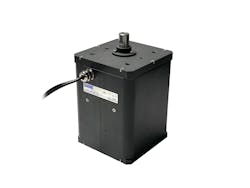SMAC Low-Profile Electric Actuator Benefits Robot End Effectors
SMAC Moving Coil Actuators has developed the LPL Series 125 of low-profile electric linear actuators specifically for use with robot end effectors. The actuators use SMAC's moving coil linear servo motor technology which enables them to provide precise control, a beneficial feature for robotic applications.
Key features of the actuators include:
- programmable control of speeds, positioning
- forces from 0.1-250 N
- real-time feedback
- high cycle rates
- cost- and energy-efficient design
- lifespan over 100 million life cycles
Electric Actuation Provides Precision and Control
SMAC's LPL Series electric actuators enable speed, positioning and force to be programmed — down to a micron — allowing its movements to be customized to specific application requirements. This is particularly beneficial for robots which may be utilized for tasks such as parts finishing and pick-and-place. Programmability of the actuator enables the robot end effector to move in exactly the way necessary to move objects and maintain productivity.
End effector applications for which the company said the LPL Series can be used include:
- testing buttons, switches and levers;
- deburring and finishing parts;
- lifting fragile products; or
- clamping materials for welding or soldering.
"With the use of robots becoming more prevalent, there is a demand for actuators with a short height/low center of gravity that can act as end effectors and perform a variety of tasks," said SMAC Founder and CEO Ed Neff. "We designed the LPL Series to fill that void, a low-profile actuator without compromising performance."
SMAC uses its moving coil linear servo motors in the LPL actuators which provides both the force necessary for many applications as well as faster speeds. There are also no rotating shafts, which can be beneficial for certain applications where this rotation is undesirable.
Compared to other robot end effector technologies such as pneumatics, electric actuators like the LPL series can offer a variety of benefits. Besides the inherent programmability possible through utilization of electronics is the lower operating costs. Pneumatics require a facility to install air compressors whereas electric actuators can make use of the electricity already on site. There are also fewer wear parts, lending to the actuator's longer lifespan.
READ MORE about SMAC's electric actuator technology.
"Precision control and feedback is extremely critical in many robotic applications," said Neff. "Electric service actuators provide control and feedback unmatched by any pneumatic actuator."
